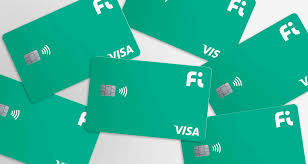Getting a FI Debit Card
When it comes to managing your finances, having a FI (Financial Institution) debit card can be a game-changer. Unlike traditional debit cards, FI debit cards offer enhanced security, rewards programs, and additional perks that can make your financial journey more convenient and empowering.

we’ll walk you through everything you need to know about FI debit cards, from understanding their features and advantages to choosing the right financial institution and managing your card effectively. By the end of this guide, you’ll be well-equipped to apply for and make the most of your FI debit card.
FI Debit Cards
A FI debit card is a card issued by a financial institution that allows you to access funds directly from your bank account. Unlike regular debit cards, FI debit cards often come with added benefits and features. These cards are typically offered by reputable financial institutions, such as banks or credit unions.
One of the key advantages of using an FI debit card is the enhanced security it provides. These cards often come with advanced security measures, such as chip technology and fraud monitoring, to protect your transactions and personal information.
Additionally, FI debit cards may offer rewards programs that allow you to earn cashback, points, or other incentives for your purchases. Some cards also provide additional perks like travel insurance, extended warranties, or discounts at partner merchants.
Choosing the Right Financial Institution
When it comes to choosing the right financial institution for your FI debit card, it’s important to consider several factors. Start by researching and comparing different institutions to find the one that aligns with your needs and preferences.
Look for reputable financial institutions known for their excellent customer service and competitive offerings. Consider factors such as fees, interest rates, ATM access, and online banking capabilities. You want to choose an institution that provides the services and features that are important to you.
Some popular financial institutions that offer FI debit cards include XYZ Bank, ABC Credit Union, and PQR Financial. These institutions have a strong track record and positive customer reviews. Take the time to review their offerings and compare them to find the best fit for you.
Applying for a FI Debit Card
Once you’ve chosen the financial institution you want to apply to, the next step is to complete the application process for your FI debit card. This process may vary slightly depending on the institution, but the general steps remain the same.
First, gather all the necessary documents and information required for the application. This typically includes your identification documents, proof of address, and social security number. Make sure to have these documents readily available to avoid any delays in the application process.
Next, visit the financial institution’s website or branch to access the application form. Fill out the form accurately, providing all the required information. Double-check the form before submitting it to ensure there are no errors or missing details.
During the application process, you may be asked to choose the type of FI debit card you want, such as a basic card or a card with specific rewards programs. Consider your financial goals and preferences to make the best choice for your needs.
Once you’ve applied, the financial institution will review it and process your request. This may take a few days to a couple of weeks, depending on the institution’s procedures. Keep an eye out for any communication from the institution regarding the status of your application.
Activating and Setting Up Your FI Debit Card
After your application is approved, you will receive your FI debit card in the mail. To start using it, you’ll need to activate and set up your card.
The activation process usually involves calling a dedicated phone number or visiting the financial institution’s website. Follow the provided instructions to activate your card. You may be asked to provide your card details and personal information for verification purposes.
Once your card is activated, you’ll need to set up a Personal Identification Number (PIN). This PIN will be used to authenticate your transactions and provide an additional layer of security. Choose a PIN that is easy for you to remember but not easily guessable by others. Avoid using common combinations such as your birthdate or sequential numbers.
In addition to setting up your PIN, you may also need to register your FI debit card online. This will allow you to access your account information, view transactions, and manage your card online or through a mobile app. Follow the instructions provided by the financial institution to complete the registration process.
During the setup process, it’s crucial to prioritize the security of your card and personal information. Be cautious when entering your card details online and ensure you are on a secure and trusted website. Avoid sharing your card information with anyone and regularly monitor your account for any unauthorized activity.
Managing Your FI Debit Card
Once your FI debit card is activated and set up, it’s important to manage it responsibly to make the most of its benefits and avoid any potential issues. Here are some key tips for effective card management:
Monitor your transactions regularly:
Stay vigilant and review your transactions frequently. This will help you identify any unauthorized charges or errors and report them promptly.
Check your account balance: Keep track of your available balance to ensure you have sufficient funds for your purchases and avoid overdrawing your account.
Review your statements: Take the time to go through your monthly statements to verify the accuracy of your transactions and identify any discrepancies.
Set spending limits:
If your FI debit card allows it, consider setting spending limits to control your expenses and stay within your budget.
Utilize personal finance management tools:
Many financial institutions provide online tools or mobile apps that can help you track your expenses, categorize your spending, and set financial goals. Take advantage of these tools to gain better control over your finances.
By actively managing your FI debit card, you can make informed financial decisions, track your spending patterns, and work towards your financial goals more effectively.
Utilizing Additional Features and Benefits
In addition to the basic functionalities, FI debit cards often come with a range of additional features and benefits. These can vary depending on the financial institution and the specific card you choose. Here are some common additional features to look out for:
Cashback rewards:
Some FI debit cards offer cashback rewards on eligible purchases. Make sure to understand the terms and conditions of the cashback program and take advantage of it to earn rewards for your spending.
Discounts and offers:
Certain FI debit cards provide discounts or exclusive offers at partner merchants. Check if your card offers any such benefits and utilize them to save money on your purchases.
Extended warranties:
Some cards offer extended warranties on eligible purchases, providing you with additional protection and peace of mind.
To maximize the benefits of these additional features, familiarize yourself with the terms and conditions of your FI debit card. Keep an eye out for promotional offers and take advantage of them whenever possible. By leveraging these features, you can save money and enhance your overall financial experience.
FAQs
How do I report a lost or stolen card?
If your FI debit card is lost or stolen, it’s important to report it immediately to your financial institution. Contact their customer service helpline or use their online reporting system to notify them. They will guide you through the necessary steps to protect your account and issue a replacement card.
What should I do if unauthorized transactions occur?
If you notice any unauthorized transactions on your FI debit card, contact your financial institution right away. They will investigate the issue and take appropriate action to resolve it. It’s crucial to report any suspicious activity promptly to minimize potential losses and protect your account.
How do I dispute a charge?
If you believe there is an error or fraudulent charge on your FI debit card statement, contact your financial institution’s customer service. They will guide you through the dispute process and help resolve the issue. Provide them with all the relevant information and supporting documentation to support your claim.
How do I update the personal information associated with the card?
To update your personal information, such as your address or contact details, contact your financial institution’s customer service. They will guide you through the process and may require you to provide supporting documentation for verification purposes.
How do I change the PIN for my FI debit card?
To change the PIN for your FI debit card, you can typically do so through the financial institution’s website or by calling their customer service. Follow the provided instructions to securely change your PIN. You may be required to provide some verification information for security purposes.
How do I request a replacement card?
If your FI debit card is damaged or lost, you can request a replacement card from your financial institution. Contact their customer service and inform them of the situation. They will guide you through the process of obtaining a new card. Depending on the institution, there may be a nominal fee for card replacement.
How do I close my FI debit card account?
If you wish to close your FI debit card account, contact your financial institution’s customer service. They will provide you with the necessary instructions and guide you through the account closure process. Ensure that you have settled any pending transactions and transferred your funds to another account before closing the account.
How do I handle international transactions and currency conversions?
FI debit cards are often accepted internationally, but it’s important to check with your financial institution regarding their international transaction policies and any associated fees. When making purchases in a foreign currency, your financial institution will typically handle the currency conversion for you. Be aware of any foreign transaction fees that may apply.
What should I do when my card expires?
When your FI debit card is approaching its expiration date, your financial institution will typically send you a new card automatically. Ensure that your mailing address is up to date to receive the new card without any issues. Once you receive the new card, activate it and update any automatic payments or subscriptions with the new card information.
Conclusion
Obtaining a FI debit card can greatly enhance your financial management and provide you with added security and benefits. By understanding the features, choosing the right financial institution, and managing your card responsibly, you can make the most of your FI debit card. Remember to stay vigilant, monitor your transactions, and take advantage of additional features such as rewards programs and discounts. By following best practices and staying informed, you can enjoy the convenience and empowerment that comes with using a FI debit card.




